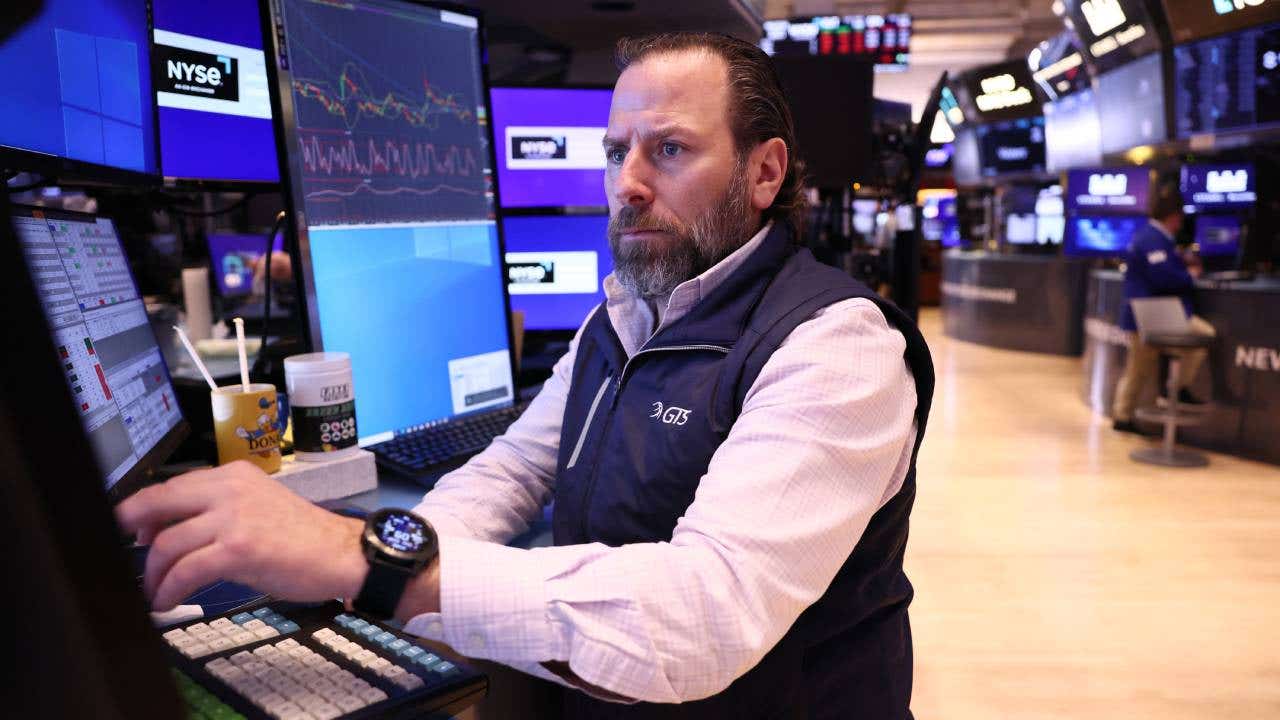5 sure-fire signs of a stock market bubble




The stock market has been on a tear over the past two years, with the S&P 500 increasing around 25 percent in both 2023 and 2024. In 2024 alone, the index closed at record highs more than 50 times.
But with stocks at elevated valuations and uncertainty around the impact of tariffs on the economy, some investors may be concerned about a potential bubble. In bull markets that seem to go on endlessly, it’s important not to become complacent.
Here are five signs to look for to judge whether we’re in bubble market territory and what we’ll likely see if we’re there.
What is a stock market bubble?
A stock market bubble is a speculative frenzy when stock prices vastly exceed the fundamental value of the companies underlying them. A market as a whole can also be in a bubble if traders buy assets seemingly regardless of their value. Similarly, individual stocks can be in a bubble when investors bid up their prices well beyond what’s justified by the underlying business performance.
A stock bubble is not merely overvaluation, which can occur even during normal periods as markets become mildly overextended. Instead, a bubble is a period of massive overvaluation, when speculators become inflamed by “animal spirits” and heedlessly bid up stocks. Often these periods are driven by a new business story that promises to revolutionize the world.
Many investors may find it helpful to work with a financial advisor during times of market uncertainty, like when stocks might be in a bubble. They can develop a financial plan that will set you on a path toward reaching your financial goals. Bankrate’s financial advisor matching tool can help you find an advisor in your area.
Watch for these tell-tale signs of a stock market bubble
There’s an old saying on Wall Street: “No one rings a bell at the top.” It means that only in retrospect does it become obvious for most market participants that the market has peaked.
But while there may be no bell at the top, observant investors can pick up on many indicators that show when the market is in nosebleed territory. You’ll want to see many of these factors working together to produce a euphoric bubble, as you weigh your options for how to keep your portfolio protected in the event that the hot market finally cools off — or worse, the bubble pops.
1. A story has captured the market’s imagination
A compelling story is one of the best frameworks for creating a stock bubble. The dot-com bubble of the late 1990s had one: “The internet changes everything.” The housing bubble of the 2000s had one: “Real estate never declines in price.” Even the 19th century’s railway mania promised that the massive benefits of the railroads would transform travel and transportation.
These so-called story stocks promise to transform the world, and while the promised benefits may ultimately arrive, they tend to take a lot longer than the stock promoters would have you believe.
The benefits of the internet eventually arrived, but not before effectively destroying hundreds of dot-com companies that had poor business models. And even the survivors get caught up in the frenzy, with the stocks of eventual leaders such as Amazon being bid up to astronomical levels before eventually falling along with the other stocks in the overhyped sectors.
Where we see it today: There’s no question that the biggest story in the stock market over the past two years has been the rise of artificial intelligence and its potential to impact many industries. AI may change many aspects of how we work and live, but exactly how the future will play out is still unclear. Cryptocurrency is another area that has bubbly qualities, in part because there are not underlying cash flows to help analysts determine a coin’s fair value, if it has any at all.
2. Prices rise regardless of news
The story is important because it offers a theme to build investors’ hopes and dreams on. It also provides a guide for what’s to come and how the new transformational industry might develop. But what if reality differs from the story? Investors will surely adjust their expectations, right?
In a bubble, it’s as if every bit of information verifies the story, so stock prices rise regardless of the news. A company hits its earnings estimates? The stock climbs. And if it misses earnings estimates by a mile? It still climbs. The story stocks seem unbreakable, and they are for a time.
And so sharp-eyed investors are calibrating reality to the story in order to see if they fit. When stocks rise but the long-term future looks clearly worse, long-term investors should be extra careful.
Where we see it today: Stocks have seen tremendous gains the past couple of years and excitement seemed to reach new heights following the reelection of President Donald Trump. Investors bid stocks higher with the expectation that deregulation and a more business-friendly administration would result in a surge in growth. Trump even toured the New York Stock Exchange. When talk of tariffs picked up, they were initially dismissed as a negotiating tactic, but more recently, stocks have fallen as investors become more concerned about the outlook for growth.
3. Other asset prices are soaring, too
Often in a bubble market, it’s not just stocks that are soaring; it’s other assets, too. Flush with cash from their stock successes, a booming economy or easy money, speculators rush out to buy other highly risky assets.
During these times you may see the prices of collectibles skyrocketing. Promoters may try to hype up “new asset classes” by highlighting how investible sports cards are, or how art from the great masters never seems to decline in value. Assets such as these produce no cash flow and so turning a profit hinges entirely on finding someone else to pay more for them than you did.
And the definition of “investible” assets continues to grow: luxury handbags, shoes, Pokémon cards, Beanie Babies, wine, video game cartridges, digital art through NFTs and the list goes on and on.
Where we see it today: With thousands of possible examples, cryptocurrencies have seen a flood of interest as speculators and promoters rush to the space to cash in. Cryptocurrency has a total market valuation of around $2.97 trillion as of March 2025, with Bitcoin accounting for the lion’s share of that figure. Of course, it’s not just digital assets that have piqued interest — shoes and handbags have seen soaring prices lately, too.
4. New traders say that old investors ‘don’t get it’
When the taxi driver, the hair stylist and the grocery clerk are giving you investing tips, it’s a good sign that an investment thesis has spilled over to the mainstream and is attracting less sophisticated retail traders looking for a buck. And they may well succeed — for a period of time.
In the rush to build hype, breathless promoters will say, “This time it’s different.” But it rarely is.
This new breed of trader will explain to you why Warren Buffett doesn’t “get” the new paradigm and that Buffett and other similarly “old school” investors are behind the curve. This new crowd may have been trading for just a few months, but they insist they understand the markets.
Need an advisor?
Yet it was Buffett who endured similar barbs from inexperienced traders in the dot-com bust and then came through it all. He avoided much of the housing debacle, too. Buffett was perched on a war chest and took advantage of ailing banks that needed cash and confidence during the 2008 financial crisis.
Pro gamblers love popular horse races such as the Kentucky Derby, because they bring easy money to the track, allowing the real handicappers to take it. So it is with investing, too.
Where we see it today: As investors cheered stocks to new highs in 2024, one notable investor was increasingly taking his chips off the table. Warren Buffett’s Berkshire Hathaway was mostly a seller of stocks in 2024, with the company’s cash position ballooning to north of $300 billion. Buffett frequently advises against timing the market, but it’s worth noting that he couldn’t find attractive uses for his large cash pile last year, even as other investors let the good times roll.
5. Stock valuations in the top percentiles
During the last phases of a stock bubble, the prices are all out of proportion to reality. Valuations are in the highest percentiles, as measured historically. By measuring on a relative basis, you get a better sense of how things match up to the bubbles of the past and whether a solid bull run is more likely to burst or continue, albeit with a more modest sense of “animal spirits.”
It’s important to recognize that a price rise alone is not sufficient to say something is in a bubble. A stock can rise 100 percent and not be in a bubble if its underlying fundamentals have improved significantly. Or if we start from a low valuation (for example, from the bottom of the pandemic) and then measure after a solid bull run, we’re sure to get gaudy figures that might make you think of a bubble.
However, it’s easy to cherry-pick price increases and say that we’re in a bubble, without looking at the broader context. Stocks could remain elevated for a long while as profits continue to rise.
Where we see it today: There’s no question that stock valuations are high. By one measure, the cyclically adjusted price-to-earnings ratio, the S&P 500 has only traded at a higher valuation twice, in October 2021 and December 1999. In October, Goldman Sachs forecast that equity returns over the next decade would average around 3 percent a year, far from the double-digit returns investors have gotten used to. High valuations don’t guarantee an immediate crash or correction, but it’s probably time for investors to lower their expectations for stocks.
Why should you care about stock market bubbles?
It’s important to recognize when a stock market bubble may be happening, though it’s not always obvious, except in retrospect. Recognizing a bubble is important because it allows you to:
- Avoid losing money. While many speculators make money during a bubble, only the ones who recognize a bubble has formed actually keep their money and avoid jumping back into the bubbly stocks.
- Prepare for a market decline. If you see a bubble has formed, it can help you navigate your portfolio through it. You can move your investments from high-risk picks to low-risk picks, or even sell out of the market altogether. By knowing that a bubble has formed, you can take steps to limit your exposure to it.
- Ready your personal finances. Sometimes a stock bubble can lead to spillover effects in the broader economy. When a bubble bursts, it often precedes a downturn in the economy, creating a recession that can lead to job loss. So a widespread bubble can be a potential indicator that the economy may be approaching its local peak. You can get your finances in order to help withstand this potential downturn.
Understanding whether a stock market bubble is developing can be useful to help navigate your investments, as well as your personal financial situation.
Examples of a stock market bubble
The U.S. has experienced at least two major market bubbles in the recent past. Bubbles and the financial losses they create tend to scar participants for decades.
- The dot-com bubble: In the period of 1999-2000, the promise of the internet led many traders to buy anything even tangentially connected to it, even if the company did not have a legitimate business plan. While some business behemoths eventually emerged from the bubble — Amazon, for example — many dot-coms quickly became dot-bombs, fading completely into bankruptcy. Other dot-com companies that did survive lost 90 percent or more of their value and never fully recovered from the carnage.
- The housing bubble: In the period following the dot-com bubble, housing began to appreciate rapidly, powered by low interest rates (which existed as a way to soften the effect of the dot-com burst) and the belief that real estate never declines in value. Housing prices appreciated, as did the stocks of many businesses associated with real estate, including construction companies, banks and a variety of specialty finance firms. When the bubble burst and housing prices plummeted, homeowners and banks were left with assets that were worth much less than they were purchased for. The resulting devastation left the economy reeling for many years.
Other classic examples of bubbles include the 17th century Dutch tulip mania, Japan’s real estate and stock bubble in the 1980s, the 18th century South Sea bubble and the U.S. stock market of the 1920s, which preceded the Great Depression. In addition, many analysts think cryptocurrency is a bubble because these digital tokens are not backed by any assets or cash flow.
How to avoid losing money when a market bubble bursts
It’s not always easy to avoid losing money when a market bubble bursts. In many cases, when one sector is massively inflated, it spills over and affects many other industries. For example, in the bear market of 2007-2009, an inflated housing market led to a market-wide decline in stocks. However, many stocks unrelated to housing recovered relatively quickly in the years following the decline, and eventually even many banks and other businesses recovered, too.
Here are a few ways to avoid losing money in a bubble:
- Avoid bubble stocks. This advice is easier said than done when a speculative frenzy grips traders, and you’re derided for not understanding the “new economy.”
- Own stock in non-bubble companies. One of the best ways to avoid losing money in a bubble, while still being invested, is to own stock in companies that are unrelated to the bubble, if that’s possible. However, sometimes even the bubble spills over into unrelated companies.
- Buy value stocks. Value stocks are often a good place to be when a market bubble bursts, because they do not have extreme expectations built into their prices. Without those expectations, value stocks often don’t decline as much as bubble stocks do when the market bursts, and they may even rise as investors shift to them.
- Buy solid companies. By investing in high-performing companies, especially those unrelated to the bubble, you may be able to escape the carnage when the bubble pops.
While it may be possible to dodge the worst when a bubble pops, often it’s not entirely avoidable, because even good stocks can decline in the short term. That’s why it’s vital to think long term and invest for the long term. Buy solid companies and then take advantage of downturns and buy them when a bubble bursts.
Bottom line
When stocks are soaring, it can be easy to overlook the increasing dangers posed by their valuation. It’s easy to get caught up in the euphoria, and high prices seem to lead to even higher prices. The party swirls on, until one day it doesn’t. So the world’s best investors focus on controlling their emotions as the market rises (and falls) so that they can coolly recognize when they need to buy and when they need to tread carefully. Consulting with a financial advisor may also help you stick to your investing goals.
Editorial Disclaimer: All investors are advised to conduct their own independent research into investment strategies before making an investment decision. In addition, investors are advised that past investment product performance is no guarantee of future price appreciation.





